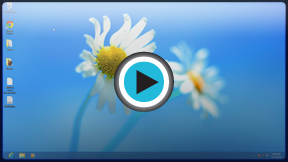Windows 8
Managing Your Files and Folders
Managing your files and folders
You can easily manage your files and folders using File Explorer in the Desktop view. In this lesson, you’ll learn how to view, organize, and search for files with File Explorer, as well as how to use libraries. We'll also talk about how libraries work with certain apps on the Start screen.
File Explorer
File Explorer (previously known as Windows Explorer) allows you to open, access, and rearrange your files and folders in Desktop view. If you've used prior versions of Windows before, File Explorer should feel like a familiar way to manage and organize your files.
- Click the folder icon on the taskbar in Desktop view to open File Explorer.
 Opening File Explorer
Opening File Explorer
Click the buttons in the interactive below to become more familiar with the File Explorer interface.
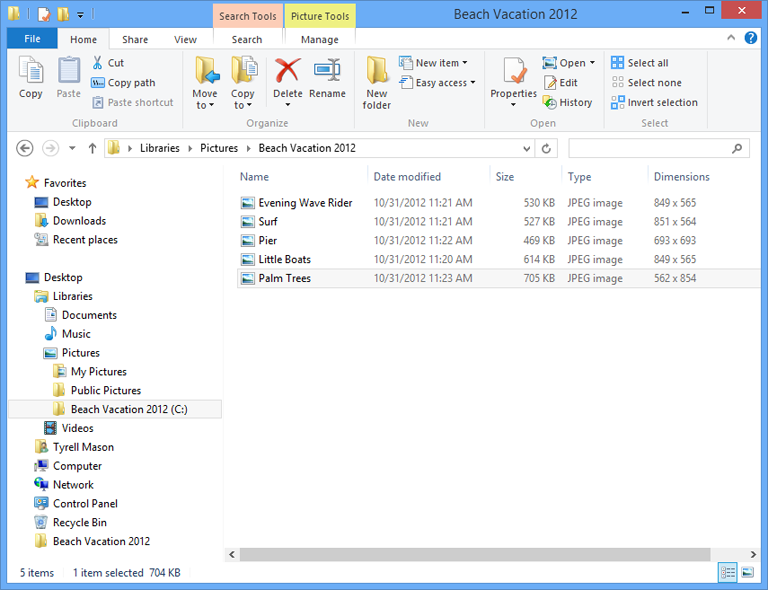
Address Bar
Use the Address bar to see the path of the current folder.
Search Bar
Use the search bar to search for specific files or folders.
Ribbon
The Ribbon allows you to access different tabs with options for viewing, sharing, and organizing your files, as well as common shortcuts like copy and paste.
Navigation Buttons
Use the Back and Forward buttons to navigate between folders.
Navigation Pane
You can quickly navigate between folders in the Navigation pane. Simply click a folder to make a selection.
File
Double-click a file to open it in the default application.
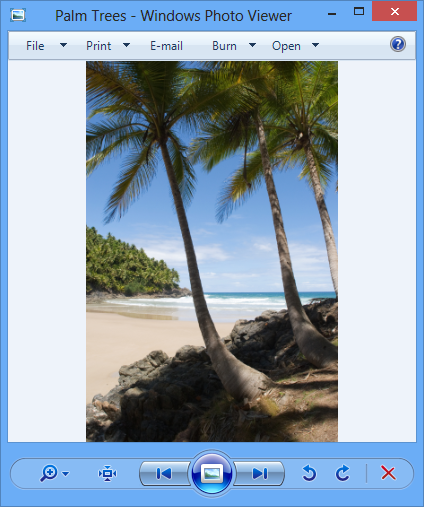
To change the content view:
The View tab makes it easy to change the way files are displayed within a folder. For example, you may prefer to see your files as a list when viewing documents and as large icons when viewing pictures.
- Select the View tab, and then choose your preference from the Layout group.
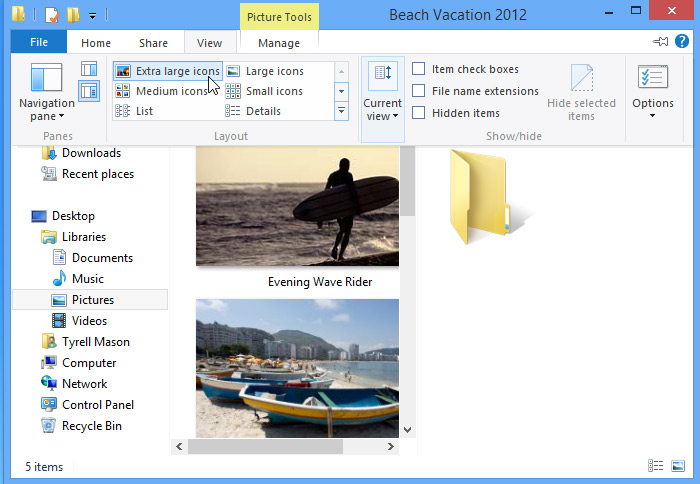 Changing the content view from the View tab
Changing the content view from the View tab
To sort files:
Depending on the folder, you may also want to sort your files. For example, you can sort files by size, name, date created, date modified, file type, and much more.
- Select the View tab, click the Sort by button, and then choose your preference from the drop-down menu.
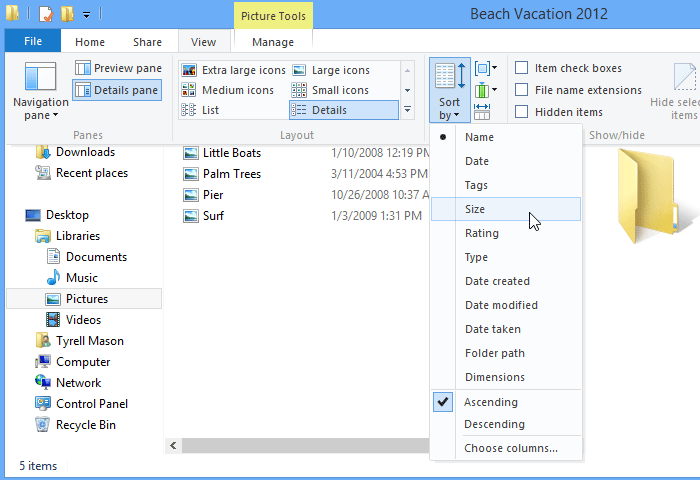 Sorting files by size
Sorting files by size
Searching with File Explorer
In addition to the Search feature found on the Charms bar, you can also search for files directly from File Explorer using the Search bar. File Explorer also offers more advanced search options, which can be especially helpful if you're having trouble finding a specific file.
To use the Search bar:
- Locate and select the Search bar in File Explorer.
- Enter a file name or keyword. Your search results will appear as you type.
 Searching for a file
Searching for a fileThe Search Tools tab
Whenever you enter a term into the search bar, the Search Tools tab will open automatically on the Ribbon. This tab gives you access to advanced search options, which allow you to limit your search by file type, size and date modified, view your recent searches, and more.
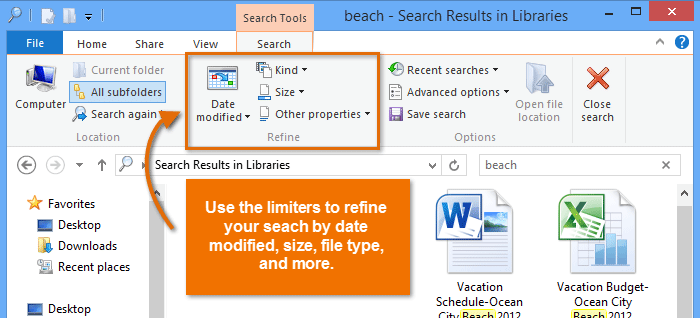 The Search Tools tab
The Search Tools tabWorking with libraries
Libraries make it easier to find your files whenever you need them. Libraries are collections of content that can be easily accessed through File Explorer. There are four basic libraries in Windows 8: Documents, Pictures, Music, and Videos.
Libraries do not actually store your files and folders—they simply help keep them organized. You can include any of your folders within a library without changing where they're stored on your computer. For example, you might include a folder of important spreadsheets in the Documents library while still keeping the folder on the Desktop for quick access.
Watch the video to learn how to use libraries in Windows 8.
Libraries and the Start screen
Libraries are especially important in Windows 8 because many of the apps on the Start screen—including Music, Photos, and Videos—use your libraries to find and display content. For example, any songs or albums in the Music library will appear in the Music app.
The apps on your Start screen are optimized for media, making it easier than ever to play music, watch videos, and view photos. File Explorer can help you organize your existing media files into libraries, so you'll be able to enjoy them from the Start screen.
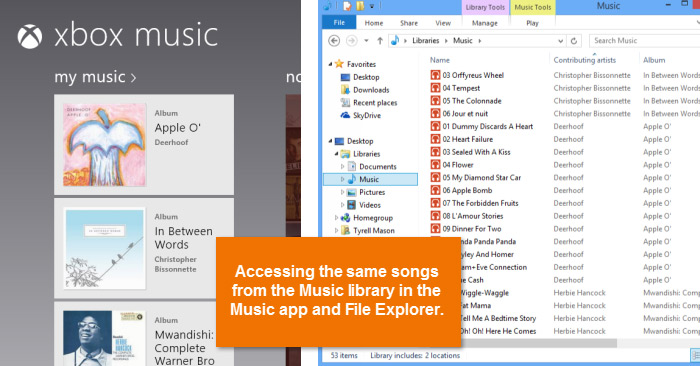 Files shared between the Music app and Music library
Files shared between the Music app and Music libraryTo add folders to libraries:
Some folders, such as My Documents and My Music, are included automatically in the appropriate library. If you want to include additional folders, you will need to add them to the library. In the example below, we'll include a folder on the Desktop in the Pictures library without changing the folder's location.
- Locate and right-click the Folder.
- Hover the mouse over Include in library in the drop-down menu and then select the desired library.
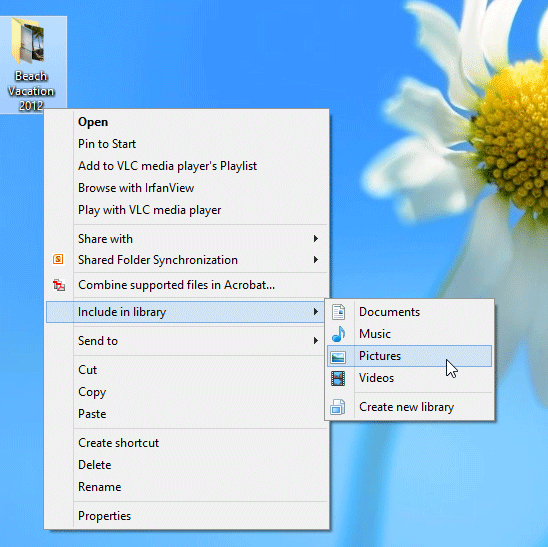 Including a folder in a library
Including a folder in a library - The folder will now be included in the chosen library.
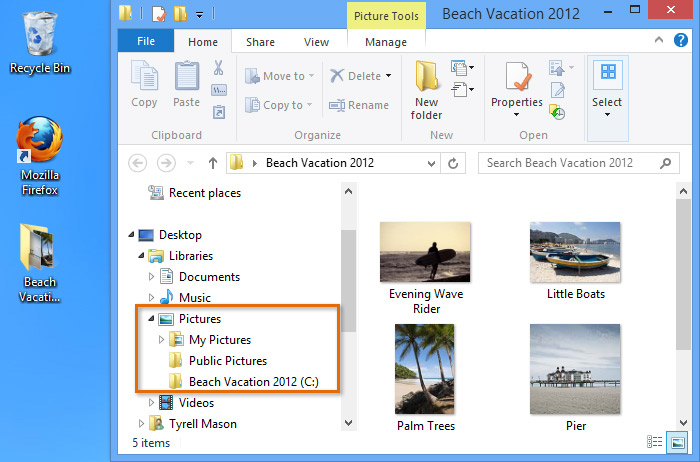 The folder included in the chosen library
The folder included in the chosen library - The photos will also be viewable in the Photos app from the Start screen.
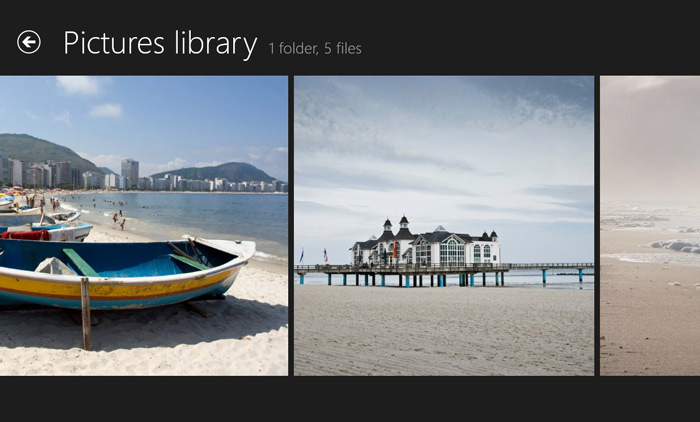 Viewing photos from the Pictures library in the Photos app
Viewing photos from the Pictures library in the Photos app



